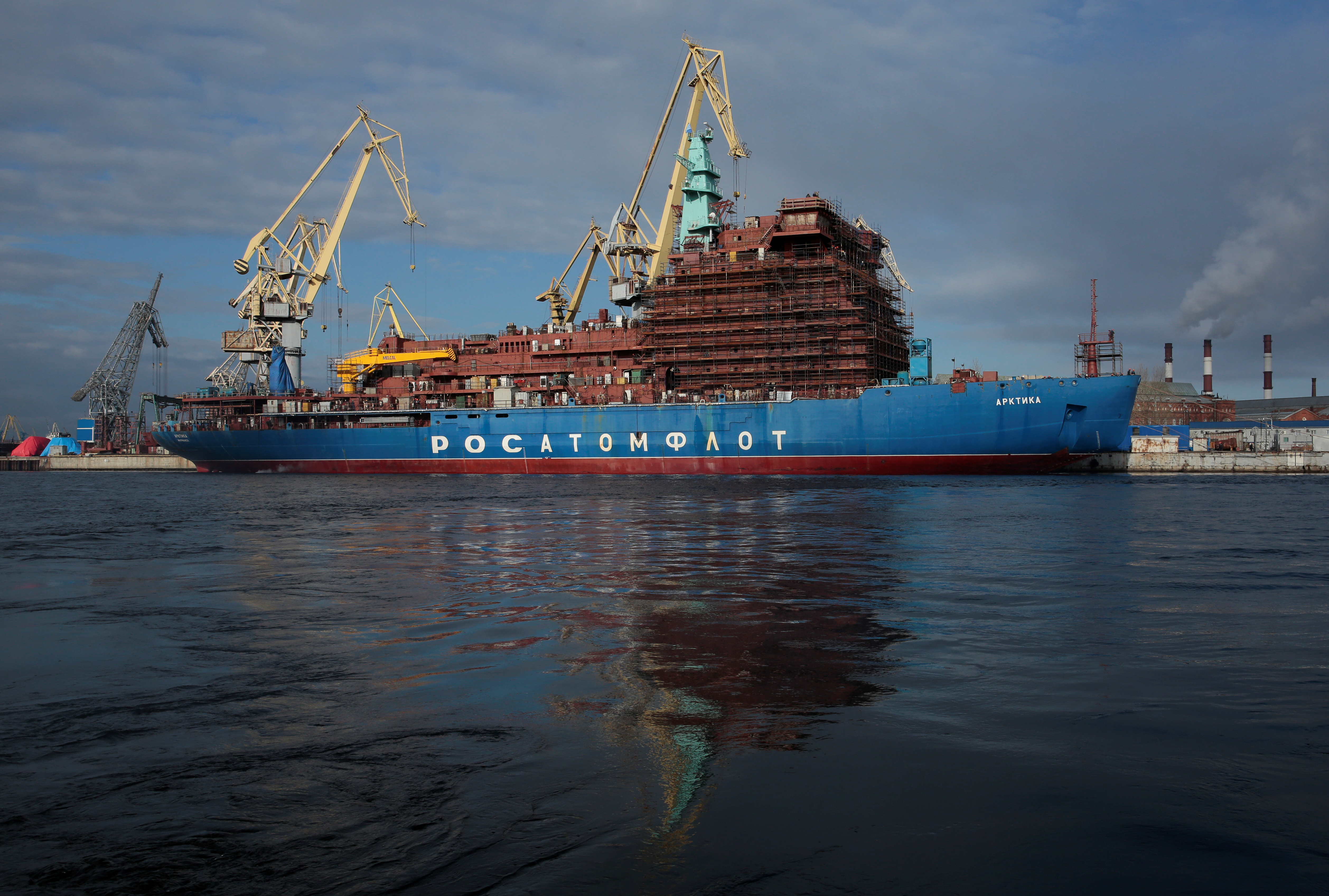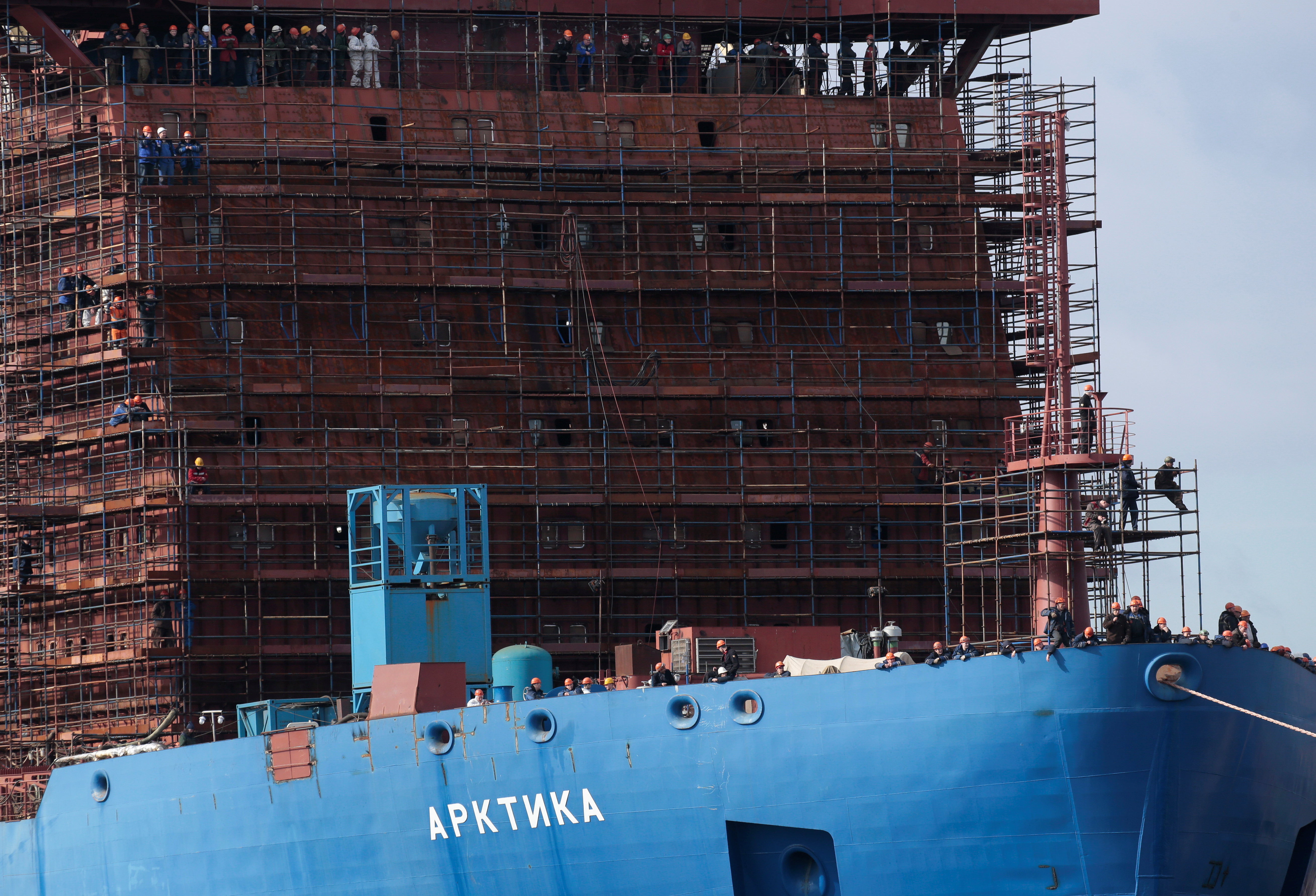As ice recedes from the Northern Sea Route, Russia will need more icebreakers, not fewer
With traffic on the Northern Sea Route expected to grow tenfold over the next decade, Russia's nuclear icebreaker operator can expect a series of challenges.

Rosatomflot will increase their icebreaker capacity to meet expected growing demand in the years to come.
In an exclusive interview with High North News, Mikhail Belkin, Assistant to the Director General of Rosatomflot, discussed the challenges, opportunities, and future of Arctic shipping along the Northern Sea Route. Rosatomflot operates and maintains Russia’s fleet of nuclear icebreakers, which escort vessels through the Arctic ice.
Belkin highlighted the immense challenges that Rosatomflot will face in the coming decade as the NSR becomes a main route of maritime traffic, with traffic expected to grow tenfold over the next ten years.
“The volume of cargo transportation along the NSR amounted to about 10.2 million tons by the end of 2017. After 2020 the shipment volume along the NSR will exceed 40 million tons, and after 2030 it will reach the figure of 115 million tons,” he said.
He explains that most of this new traffic will come through the development of Russian Arctic projects and highlighted that multilateral cooperation will be essential to safely operate the route.
“The construction of the necessary infrastructure will be carried out gradually. It is expected that in 2024 the volume of cargo transportation along the Northern Sea Route will at least reach 50 million tons of LNG per year,” Belkin says.
Need for more icebreakers
To meet these growing challenges Rosatomflot will need additional icebreakers, Belkin explains.
“To ensure uninterrupted and trouble-free navigation of cargo ships by the NSR, it is necessary to construct new nuclear-powered icebreakers.” He confirms that the modernization of the icebreaker fleet represents a strategic task and that three out of the four nuclear icebreakers currently in operation are approaching the end of their lifespan; Vaygach in 2022, Taimyr in 2024, and Yamal in 2026. Only 50 years of Victory is scheduled to remain in service into the 2030’s.
Rosatomflot has begun the process of replacing these aging icebreakers with the new Arktika-class icebreaker. Three vessels, the Arktika, Sibir, and Ural will be launched between mid-2019 and 2021. However, with growing LNG operations in the Arctic, simply replacing aging icebreakers with new ones will not be sufficient, Belkin said.
“It is safe to say that the launch of the second Novatek project, Arctic LNG 2, will certainly raise the issue of the construction of a fourth and fifth Arktika-class icebreakers.” He expects that this would allow for year-round navigation and escort of LNG ships in the western part of the route.

Year round navigation with new icebreakers
These new icebreakers will be significantly larger than their predecessors and be more efficient and safer to operate. The capacity of the nuclear reactors will increase from 53 MW to 60 MW and the Arktika-class will have a beam 34 meters wide, more suitable to escort commercial vessels as it can cut a wider channel through the ice than older-generation icebreakers with a beam of 29 meters.
“The usage of the automated systems allowed for the reduction of ship personnel by almost 50 percent – up to 53 crew members. A variable draught (10.5 meters/8.55 meters) made it possible to navigate both in the deep Arctic Ocean and in shallow waters of the Yenisey River and the Gulf of Ob,” explains Belkin.
Year-round navigation along the eastern parts of the route will require a new even-larger class of icebreakers, according to Belkin. This effort is known as the Leader-class icebreaker or Project 10510. Technical proposals were developed in November 2017 for this new super-powerful vessel.
“The maintenance of the Arctic routes will require three such icebreakers, whose main tasks should include ensuring year-round navigation in the eastern sector of the Northern Sea Route. Escorting large-capacity vessels in heavy ice should be possible due to the large width and high power of these icebreakers. Currently, the date and construction site of the first nuclear Leader-class icebreaker are being discussed.”
Even with less ice icebreakers still needed
With respect to the continued need for icebreaker assistance in the light of decreasing ice and strong ice-class vessels such as the Yamal LNG carriers, Belkin cautions that icebreakers will still be required.
“As for the Eduard Toll LNG carrier, it actually traversed through the Arctic waters without the help of an icebreaker, but this case is the first in the history of the route and it would be premature to talk about the established practice of ships passing along the Northern Sea Route without icebreaker escort. Besides, it should be noted that it proved difficult to guide the tanker under conditions of Polar Night, as well as the pressure ridges and hummock fields (ice mounds usually less than 15 meters in height) that obstructed the movement.”
Reorganization of NSR responsibilities
The rapid development of the route has resulted in an ongoing struggle for power and control over the NSR between different Russian government actors and agencies. Belkin confirms that a final decision on who will operate the route will be taken by the Government of the Russian Federation and could possibly happen before the end of the year.
“Should Rosatom State Corporation be chosen as the operator, a separate division will be created in its structure which will assume the functions of regulating Arctic-related issues.”
Under such an arrangement Rosatomflot would be granted additional responsibilities for the NSR, which currently lie with the Ministry of Transport and its Northern Sea Route Administration as well as Rosmorport, the operator of ports and non-nuclear icebreakers. This ongoing rivalry and vying for influence led to direct conflict between Rosatomflot and the NSRA last month surrounding the LNG carrier Boris Vilkitsky and resulted in President Putin personally getting involved in the incident.
The consolidation of control over the route has been a long-standing goal of Rosatomflot and Belkin expects that “the adoption of the bill [to grant Rosatomflot additional responsibilities] will significantly enhance the development of the NSR as a major international transport route in the Arctic and promote the implementation of Russian Arctic projects in every possible way.”